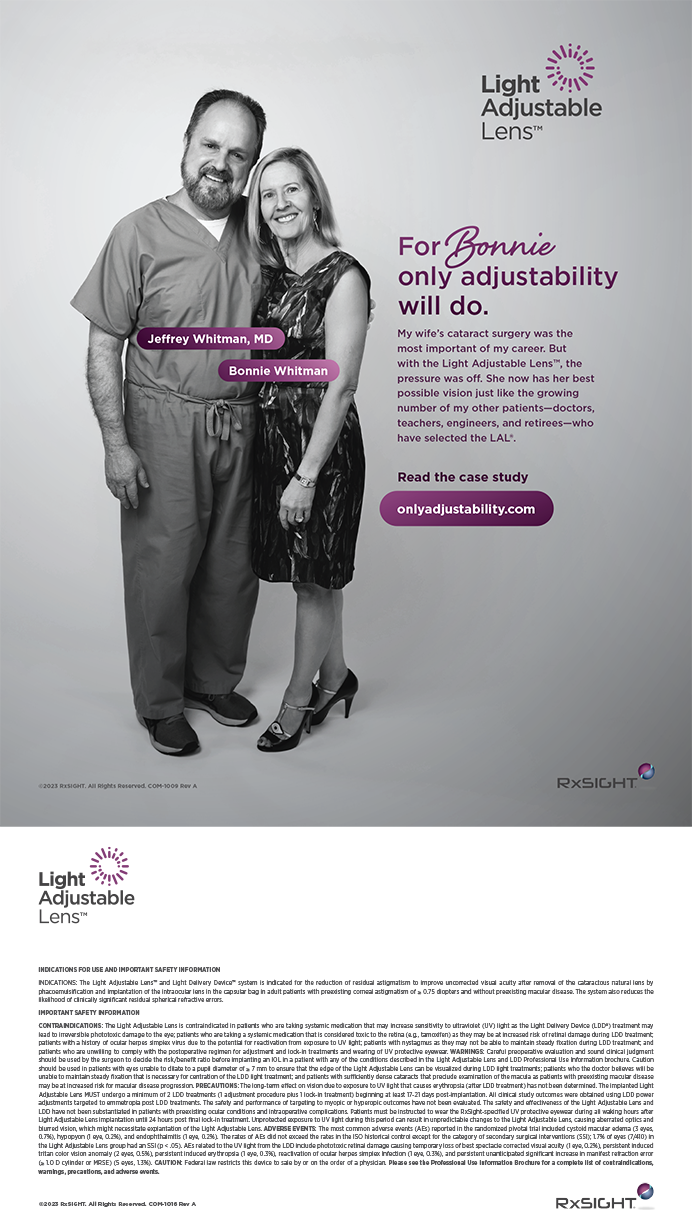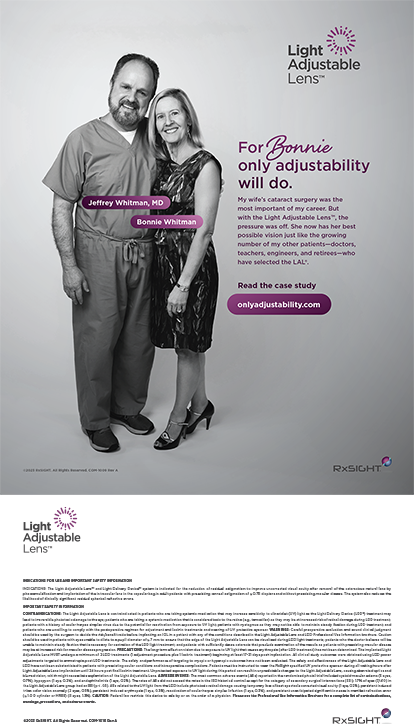
The success of Ophthalmic Surgeons & Consultants of Ohio (OSCO) is inextricably intertwined with the efficiency and convenience afforded by The Eye Center, a conglomeration of complementary eye care services and more. The Eye Center is a building in downtown Columbus that houses the large multispecialty group practice, along with several other ophthalmic surgery specialty practices, an ambulatory surgery center (ASC), a primary care physician’s practice, a compounding pharmacy, an eyeglass dispensary, a hearing center, the Central Ohio Lions Eye Bank, and even a ground floor deli. When OSCO partners Douglas Baker, MD, and Alice Epitropoulos, MD, talk about The Eye Center, they use the phrase making a dream become a reality and colloquially refer to the bustling building as a “mega eye institution.”
When The Eye Center began taking shape back in 2005—first as a wish list and then as an actual project—Dr. Baker became the de facto president because of his earnest involvement in and commitment to seeing it to fruition. “People talk about things and want things, but not everybody is willing to do what it takes to get things done,” he tells CRST.
More than 60 ophthalmologists operate in the ASC; half of those practitioners are housed in The Eye Center, and half are at suburban Ohio practices. “The cool thing,” Dr. Baker comments, “is that the majority involved owns part of the ASC and most physicians involved have ownership in the building.” In addition to the practices and ASC, there is a third associated component: a foundation that facilitates educational programs. “We hold support group meetings for patients who have Graves disease and keratoconus and other ocular conditions,” he explains. “We also sponsor continuing medical education symposia for ophthalmologists, optometrists, and ophthalmic technicians.”
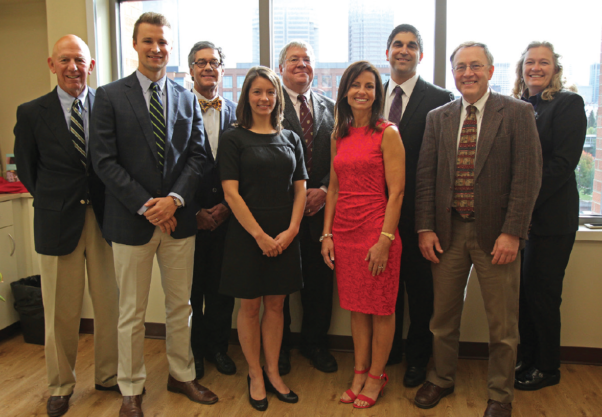
The model is a complex but winning one. “Participants have their own cost centers and their own practices, but they share the ASC and the common goals of providing excellent care in an efficient manner,” says Dr. Baker, who is one of three glaucoma specialists in the nine-surgeon OSCO practice. OSCO has been providing eye care since 1969, and Dr. Baker has been with the practice for 30 years.
Dr. Epitropoulos is a cataract and refractive surgeon who also played a role in developing The Eye Center. She remembers that the process began about 12 years ago with approximately 33 ophthalmologists who decided to “build our dream.” They started by compiling a list of priorities to create a center of excellence. “We wanted to provide the best quality of care for our patients, and we wanted it to be convenient,” she recalls. “We wanted to include all the different ophthalmology specialties, and that’s how it started. One of the unique features about The Eye Center is that we have all specialties represented under one roof, including neuro-ophthalmology and oculoplastics in addition to retina, glaucoma, and anterior segment cataract refractive surgery. So, if I have a patient who has a retina problem, it’s very easy for me to send [him or her] downstairs to one of the retina groups for a consult, saving [him or her] a trip on another day.” Dr. Epitropoulos also developed a special focus on dry eye disease (DED) and a few years ago built The Dry Eye Center of Excellence within OSCO.
CENTRAL OHIO LIONS EYE BANK
The mission of the Central Ohio Lions Eye Bank is to restore, improve, and preserve vision by connecting eye donors and transplant recipients, educating physicians, and enhancing eye research through quality eye banking services. The Eye Bank recently announced the establishment of the Richard G. Lembach, MD, Eye Banking Education, Research, and Development Fund to support endeavors intended to bring about progress, innovation, and development. The fund will award educational and research opportunities to Eye Bank staff and qualified eye researchers for the purpose of advancing the Eye Bank’s mission.
The benefits of this unique configuration, Dr. Baker explains, are efficiency for the practices and convenience for the patients. If a patient requires a surgical procedure that has cataract, glaucoma, and retinal components, all can be addressed during the same scheduled OR time with three different specialists in attendance who are associated with practices housed in or affiliated with The Eye Center of Columbus. Last year, 11,738 cases were logged in the ASC, representing 16,645 procedures, reflecting the numerous instances when multiple procedures are performed concurrently.
In the past 10 years, the ASC has doubled its number of ORs and added a femtosecond laser, and in the past 5 years, the number of surgical cases rose from approximately 7,000 to more than 11,000. Dr. Baker attributes the continued growth to efficiency, among other things. He notes, “The physicians who are part of The Eye Center are getting busier. It’s a very efficient surgery center. We try to give most cataract surgeons two ORs so they can go back and forth and perform 10 to 20 procedures in a morning. The physicians who work here are pleased. They recruit other physicians to work here, and each of the practices is growing and adding partners. Essentially, we have a good product that continually attracts more physicians who keep their patients satisfied.”
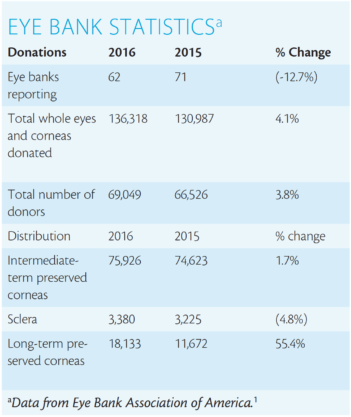
Dr. Baker reports that the ASC is debt free and that, at the end of 2016, it achieved a milestone, recording its best quarter dividend in its history. The ASC’s remarkable financial picture does not come by accident; it is a byproduct of ASC Administrator Mary Meier’s managerial expertise. She describes her role as being responsible for all financial aspects of the ASC as well as physician credentialing, personnel scheduling, OR scheduling, and management of human resources. Ms. Meier says, “I’m in charge of daily operations.”
She oversees 74 employees and spends very little time on training, because turn-over is almost nonexistent. “We actually have a lot of the same people who were hired when this ASC opened 11 years ago,” she remarks. Her trick? “I’ve been in management for many years, and my policy has always been family first,” she comments. “I am totally flexible when it comes to anything that has to do with family. If someone has their child’s recital at 2 o’clock on Wednesday and they want to leave early, as long as they make it up on another day, I allow that. I believe no one should have to miss activities with their kids or struggle to fit in a doctor’s appointment. I don’t deny any time off for personal or family events. I think that family, sickness, that all comes first, and that makes them appreciate their job more, and they do a better job for us.”
The ASC is among the largest in the United States, with eight ORs, a femtosecond laser and excimer [laser] room, and two Nd:YAG laser rooms. “We’re definitely larger than your average facility,” Ms. Meier explains. When Dr. Baker recruited her into her current position in 2009, there were four ORs; now, the facility is at capacity for the available space. Ms. Meier says being busy is a great “problem” to have but is also a struggle. “When I started here, we only had 40 credentialed physicians at this facility; I’m now up to 80,” she remarks. “As the physicians came aboard and our block time was filling up, we would strategically look at that block time and the need for opening an OR, and we opened one OR at a time. The facility was originally built out for eight ORs, but they weren’t equipped. So, as physicians came aboard and filled that block time, we opened and equipped each OR.”
Ms. Meier says it helps that she has an excellent clinical director who is equally involved in carrying out shared goals such as remaining debt free. She comments, “Our clinical director did an excellent job of contracting the way we paid for our capital equipment. As I would open each OR, instead of taking out a huge loan, we would take out an equipment equity loan. We don’t purchase anything until there’s a need for it. Just because one physician wants something doesn’t mean everyone does. One of the reasons we are debt free is because we paid off all of our equipment pretty quickly.”
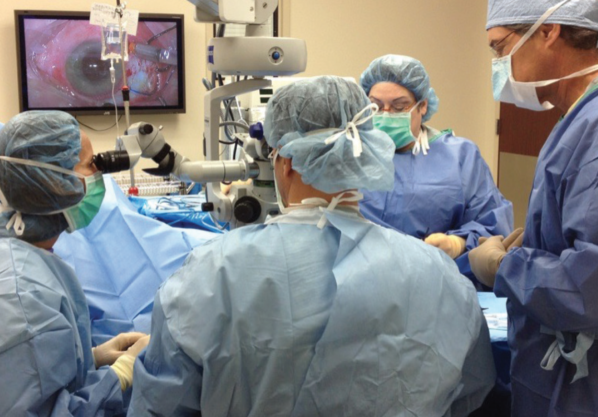
Excellent patient care, convenience, efficiency, research, and innovation are among the attributes that enable OSCO, The Eye Center of Columbus ASC, and The Eye Center to maintain their competitive edge in the thriving Ohio ophthalmic market. Dr. Baker, Dr. Epitropoulos, and Ms. Meier address these winning features in more detail.
CRST: What makes The Eye Center of Columbus ASC and its affiliated surgical practices excellent?
Ms. Meier: We offer something at our ASC that you won’t find at most eye centers. We have the ability to do [combined] cases. A patient can come in and have cataract, retina, and glaucoma surgery in 1 day. [He or she is] only getting the anesthetic one time, which, of course, is a major benefit. Another benefit is that, if the cataract surgeon were to drop a lens, for instance, we have the capability of calling a retina surgeon from downstairs to come up and help. Something else that makes our center excellent is that the majority of our nurses have specialized in ophthalmology, some of them for as long as 30 years. The quality of care that the patient gets here, as opposed to a hospital, is not even comparable. In addition to getting the best possible care, patients save hundreds of dollars coming to our center rather than going to the hospital. On top of the quality of care and economic benefits for the patient[s] is the convenience that they experience, because they can get everything done in 1 day.
CRST: What keeps OSCO on the cutting edge?
Dr. Epitropoulos: We continually build our practice, and our educational foundation helps strengthen our positive reputation, and that lends itself to our steady growth. Also, we continue to involve ourselves in research and clinical trials and in presenting at national meetings, and I think that certainly helps to put our name on the map and reinforce our brand. We are committed to making worthwhile new technology available to our patients. We were an early adopter of femtosecond laser surgery, and our oculoplastic surgeons recently brought in a Sciton laser for cosmetic procedures. We also recently invested in new diagnostic devices for glaucoma.
Another element of our practice that cements us as a leader in the market is the formation of our Dry Eye Center of Excellence. I felt this was important, because it’s the leading reason why patients see their eye care practitioner. It’s imperative to assess, diagnose, and then treat DED prior to proceeding with cataract or refractive surgery to maximize visual outcomes. I have a protocol set up to identify patients who have ocular surface disease before they are seen by me. If they have symptoms of DED, they will automatically get point-of-care testing, which makes diagnosing DED more accurate and reliable if performed prior to receiving any eye drops that can interfere with their ocular surface. I feel like I’m offering value to my patients, because ocular surface disease can significantly interfere with our surgical outcomes.
We are currently involved in a couple of national multicenter clinical trials for DED, and we are also gearing up to start a clinical trial looking at the benefits of intense pulsed light laser [treatment] in patients that have DED. Evidence indicates that intense pulsed light is becoming more accepted in patients with meibomian gland dysfunction, particularly those patients who have telangiectasia associated with rosacea.
CRST: What is ahead for The Eye Center?
Dr. Baker: We’re actually talking about building a new eye center, probably a few miles outside of the city, with better parking and an improved design so that the cooling and heating system would be utilized more efficiently. We’ve learned so much from this project that we could apply to a newer version. We built a great model 11 years ago. Now, we’re just trying to figure out how we can introduce improvements. We are unable to expand in the current building, so we’re kicking around [several] questions. Should we build The Eye Center and do it better? Should we have one tax ID number? Should we have a central billing system? Should we have central testing? Should we introduce economies of scale for things like health insurance for our employees? When we first started, we just wanted it to go from a dream to a reality. We accomplished that, and it’s exciting, but now, we are back in a similar position as then, only now we are looking at a bigger and better dream.
1. Statistics. Eye Bank Association of America website. http://restoresight.org/who-we-are/statistics. Accessed April 24, 2017.



